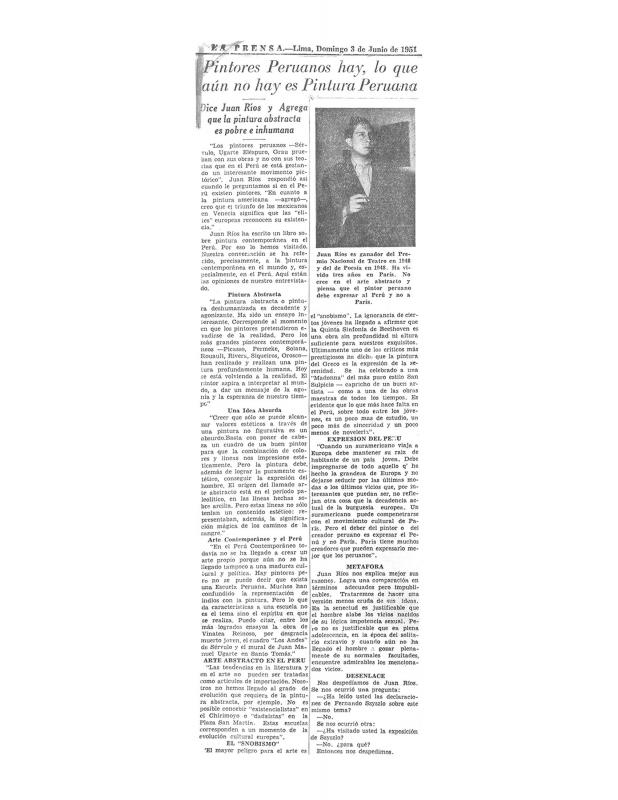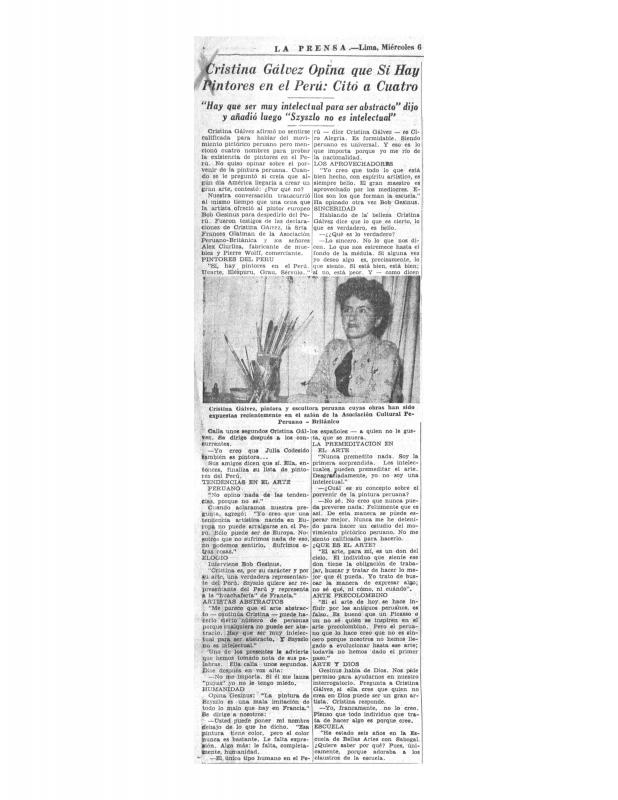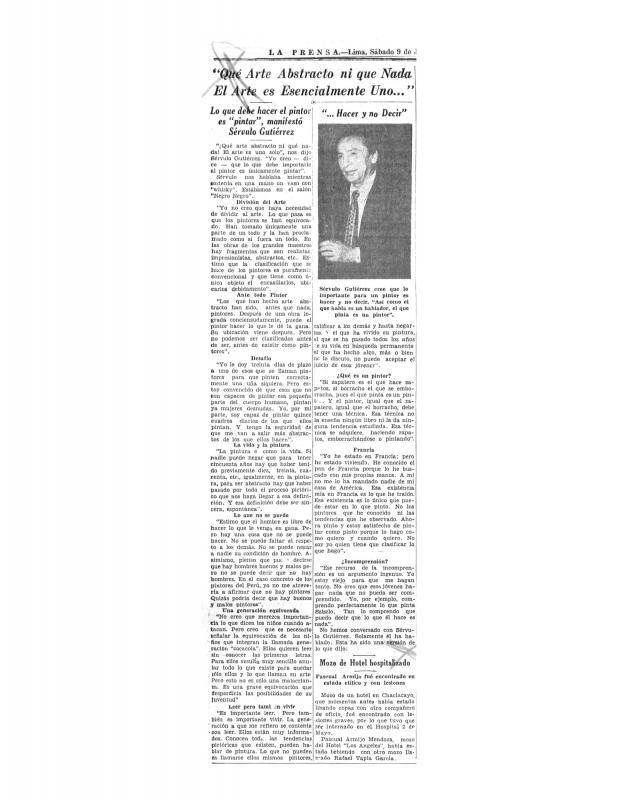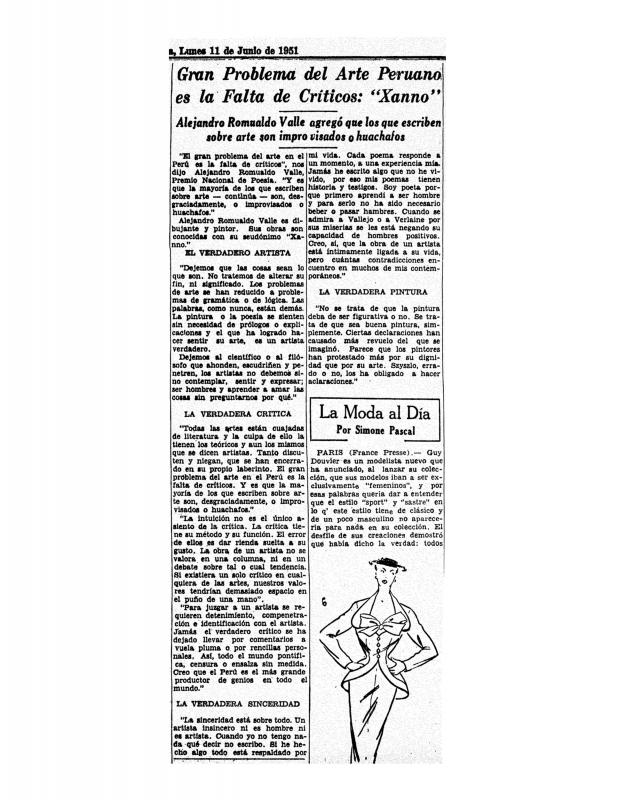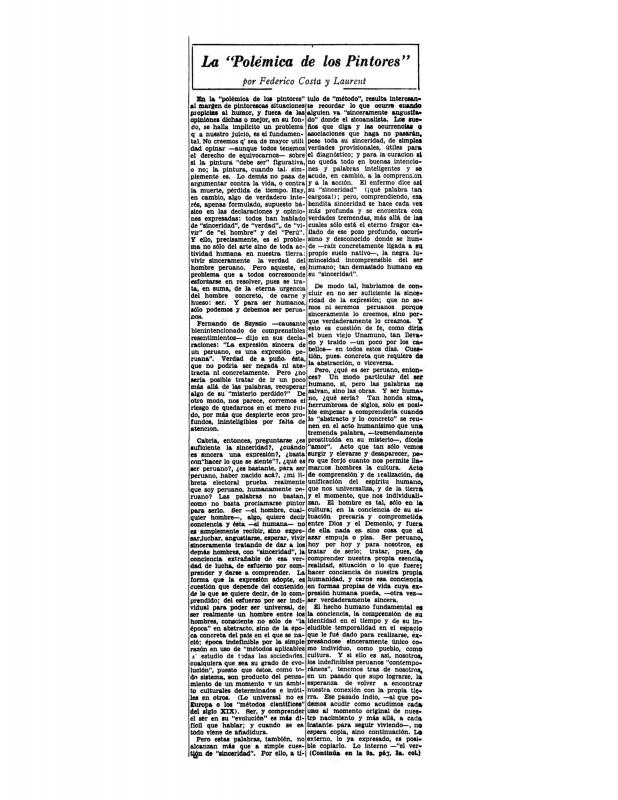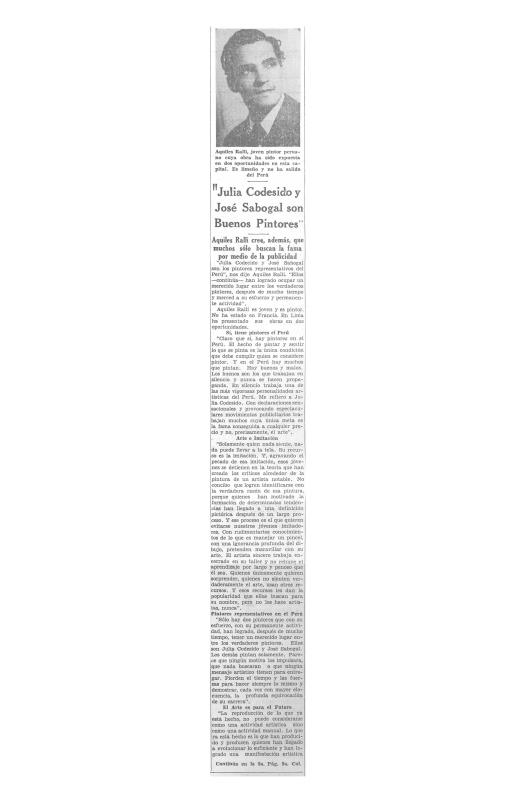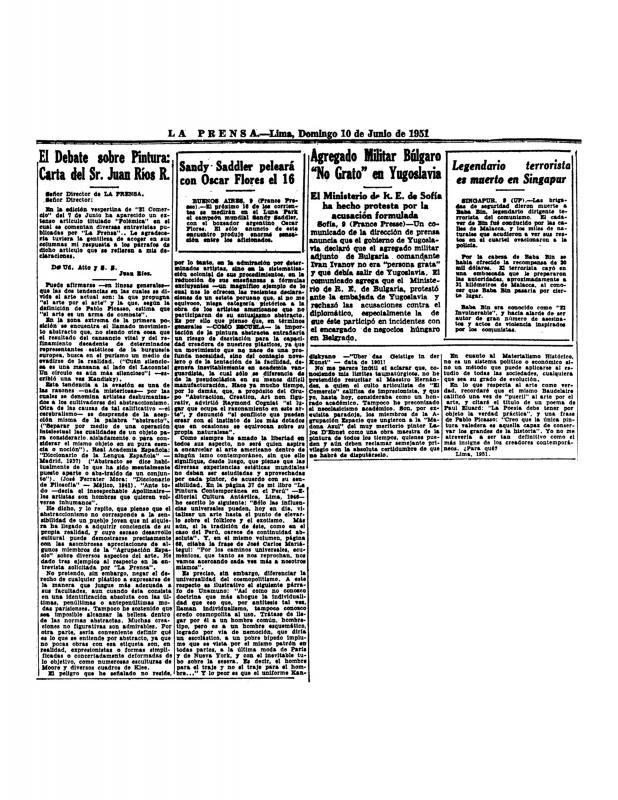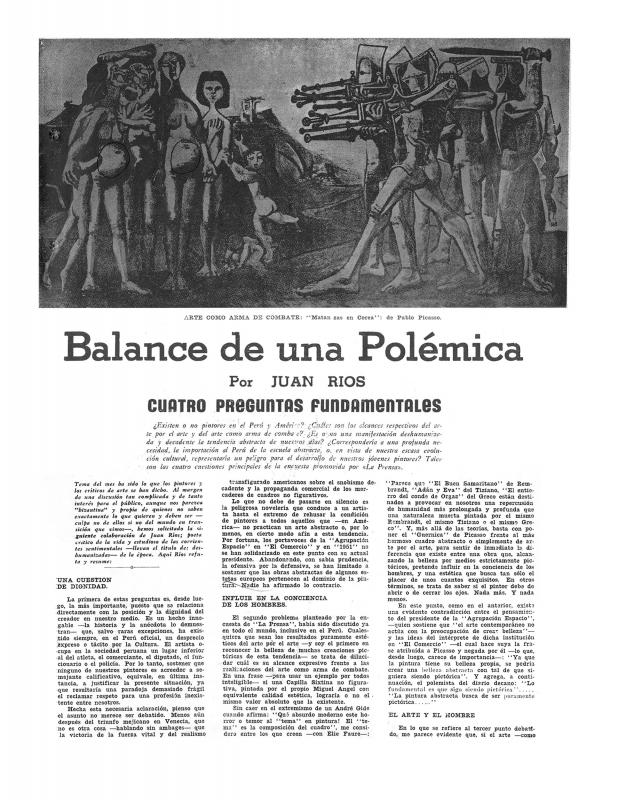In this review, the Cuban art critic Alejandro G. Alonso discusses the exhibition of work by Fernando de Szyszlo at the Casa de las Américas’ Galería Latinoamericana in Havana, Cuba. Although Peruvian abstract art was originally a cosmopolitan language, in the late 1950s, it began to acquire deeper roots and assumed characteristics that were associated in a variety of ways with the formal repertoire of pre-Hispanic art. The artist Fernando de Szyszlo played a key role in this process as the founder of the movement and one of its most controversial theorists. Szyszlo filled his work with color references and archetypal suggestions that evoked the scope of Pre-Columbian art (and, particularly, of the pre-Inca culture of the coastal region), reinforcing its significance by giving the [work] titles in the Quechua language. The high point of his work was the series Apu Inca Atawallpaman (1963), inspired by the colonial Quechua poem by the same name that was translated by his friend, the writer and anthropologist José María Arguedas (1911–1969). This series prompted several important critical reviews, including the one by Emilio Adolfo Westphalen (1911–2001), which provided subsequent readings of the artist’s work. A year after the successful reception of his exhibition in Lima—where it was highly regarded, even by those who had once been opposed to abstract art, such as Sebastián Salazar Bondy (1924–1965)—Szyszlo took it to several Latin American cities, starting at the Museo de Arte Moderno de Bogotá in Colombia. There, Marta Traba (1930–1983), the young and influential Argentinean art critic, praised the collection as one of the most solid attempts to create a modern language with an Americanist content. This gave Szyszlo’s work a progressive cachet that was in line with the expectations that had arisen among left-wing intellectuals regarding the Cuban revolution. The painter had an exhibition at the Casa de las Américas in 1968, but three years later he publicly broke with the Fidel Castro regime as a result of the Herberto Padilla case. In 1951, Szyszlo was involved in the first debate about nonfigurative art in Peru, when he prompted an angry reaction from local intellectuals and artists. [See the following articles: “Pintores peruanos hay, lo que aún no hay es pintura peruana: dice Juan Ríos y agrega que la pintura abstracta es pobre e inhumana” (anonymous) (doc. no. 1137808); “Cristina Gálvez opina que sí hay pintores en el Perú: citó a cuatro: ‘Hay que ser muy intelectual para ser abstracto’ dijo y añadió luego ‘Szyszlo no es intelectual,’” (anonymous) (doc. no. 1150897); “Qué arte abstracto ni que nada, el arte es esencialmente uno...": lo que debe hacer el pintor es ‘pintar,’” by Sérvulo Gutiérrez (doc. no. 1150851); “Gran problema del arte peruano es la falta de críticos: "Xanno": Alejandro Romualdo Valle agregó que los que escriben sobre arte son improvisados o huachafos,” (anonymous) (doc. no. 1150928); “La ‘polémica de los pintores,’” by Federico Costa y Laurent (doc. no. 1150866); “‘Julia Codesido y Sabogal son buenos pintores’: Aquilles Ralli cree, además, que muchos sólo buscan la fama por medio de la publicidad,” (anonymous) (doc. no. 1150882); “El debate sobre pintura: carta del Sr. Juan Ríos R.” (doc. no. 1150912), and “Balance de una polémica: cuatro preguntas fundamentales” (doc. no. 1137882), both by Juan Ríos; and “A los pintores peruanos,” by Ángel Guido (doc. no. 1150943)].

